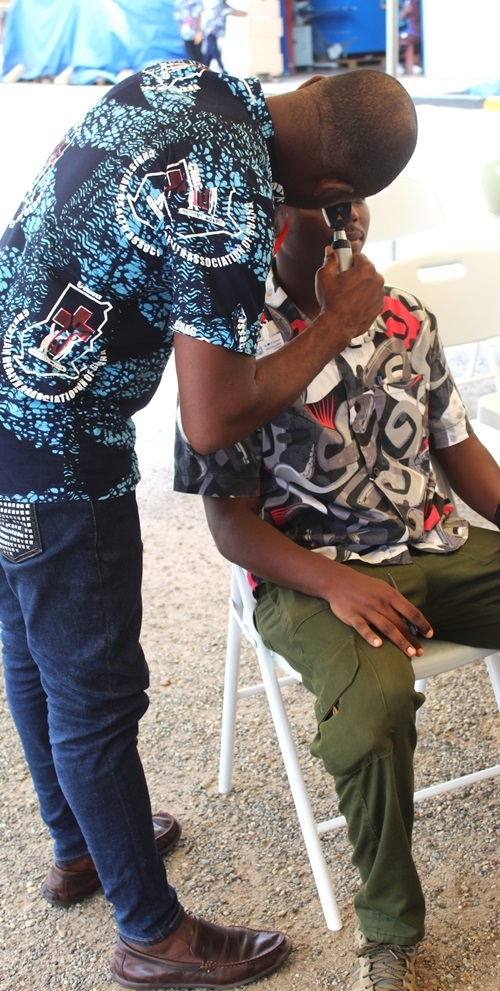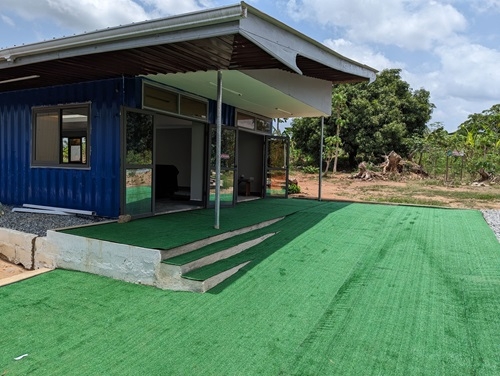
Extreme Heat: Risks for workers in global supply chains
Today is World Environment Day, celebrated around the world since 1974 to raise awareness of environmental issues. Where previously environmental and social challenges might have been perceived as separate spheres, we now understand with certainty, that the two are in fact inseparable.
Environmental and human issues are two sides of the same coin
Environmental challenges have human impacts, and human challenges have environmental impacts. The evolution of this understanding culminated in 2022 when the United Nation’s General Assembly declared access to a clean and healthy environment to be a universal human right. The escalating climate crisis illustrates with frightening urgency how our societal failure to recognise and respect this right is impacting workers.
The economic development model pursued worldwide since the industrial revolutions of the 18th century has pumped trillions of tonnes of carbon dioxide and other greenhouse gases into the earth’s atmosphere. The warming effects of this are destabilising our climate and making extreme weather events frequent and more severe.
Climate crisis and extreme heat
Earlier in the year South Asia baked during weeks of extreme heat. Schools were closed in Bangladesh, India and the Philippines. In Kolkata, India, temperatures soared to 46 degrees, 10 degrees higher than the seasonal average. Exposure to extreme heat can cause illness, accidents and even death. People are as vulnerable in their working lives as in their non-working lives.
Researchers calculate that 490 billion hours of labour were lost due to heat exposure in 2022, a 42% increase on the period 1991-2000. Workers in the apparel and textiles industries are considered highly vulnerable to extreme heat. Researchers from the Global Labour Studies Institute at Cornell University for example found that by 2030 workers in Dhaka’s RMG factories could face 65 lost working days per year due to heat, and that the combination of extreme heat and flooding could cost the Bangladeshi RMG industry 27 billion USD, and lead to the loss of 255,000 jobs.
How can brands and suppliers protect garment workers from the risks of extreme heat?
Since 2019 ETI member, Ethical Apparel Africa (EAA) have been majority owners in an apparel factory in Koforidua, two hours north of Ghana’s capital, Accra. The factory now employs 500 workers, producing high quality workwear, sleepwear and babywear for European and North American markets, Throughout the year in Ghana, outside air temperatures range from 25 to 40 degrees Celsius. EAA recognise the risks that 40-degree temperatures pose to the health and safety of their growing workforce. Here are several practical steps they’ve taken and recommend to mitigate these risks:
Encourage social dialogue between leadership and workers
Workers at the Koforidua factory are represented by worker committees: one for shop-floor workers, one for middle-managers and one for senior managers. Workers are elected to committees annually. The committees meet regularly with general management and directors, and meeting minutes are available to all staff. The committees are very active, including on issues related to ergonomics, health and safety and heat. EAA’s CEO finds their insights into what is needed and what will work – and what won’t work – invaluable. One simple recommendation from the worker committees was to provide a shaded areas in the factory grounds to enable workers to enjoy their break times outside, even during times of high temperature. As per Ghanaian law, workers at the EAA factory are entitled to join trade unions. The national trade union representing the apparel industry is invited to the factory every year to discuss this option with workers. However, to date workers have demonstrated a preference for existing worker committees, citing their success in hearing and responding to issues raised.
Invest in affordable clean energy
The factory is a metal warehouse structure with a high ceiling. As such it gets very hot inside, but the size and height of the unit make air conditioning units ineffective. When EAA became majority owners, they recognised that other cooling solutions were needed. Ghana’s electricity grid provides a reliable supply, but costs are high. Therefore, EAA invested in 160 solar panels to generate their own electricity (total 211 kWp*). The solar system is on a lease-to-own contract which costs no more than electricity bills were previously. Generating their own electricity has been an enabling factor in several other changes.
Ensure cooling and air flow
With an affordable electricity supply in place, EAA invested in a heat extraction system. Fans positioned high up factory walls draw rising hot air out of the factory, creating an air flow as cooler air from outside is drawn in. At its peak this system reduces indoor air temperature by 3-4 degrees Celsius. This is a significant improvement however the system is less effective when outdoor temperatures are higher. So, in addition EAA repositioned the factory’s existing fans to make them more effective for workers. Previously fans were located high in the ceiling, EAA repositioned them to the level of the buzz bars above workstations, so workers benefit from the air flow.
Provide access to hydration
The factory has a water borehole linked to a filtration system. Workers have access to cooled water throughout the day and are encouraged to fill their water bottles at the end of rest breaks and to keep these with them at their workstations. Although water scarcity is not an issue locally, access to filtered water is costly, so workers are encouraged to fill water containers for their home-use.
Identify vulnerable workers
Annual health checks are offered to all staff. These are conducted by an in-house nurse working with external doctors. Health is a very private matter in Ghana and so initially staff were cautious about taking-up this opportunity. A lot of trust building was needed, but the initiative is now popular and workers understand the importance of prevention. With workers’ permission, the health checks have enabled EAA to identify staff who are more vulnerable to heat and ensure their work is adjusted appropriately – these include workers with underlying health conditions or illnesses, as well as pregnancy. Vulnerable workers can be assigned to lines within the factory’s cooled zone (see below) or moved off lines which involve manipulating heavy bulky items that are harder to lift and move.
The adaptability of the workforce has been supported through a thorough multi-skilled training programme which ensures workers can work across different product types and different operations and machines. First Aiders have been trained to recognise and respond to heat related illness.
Provide cooled zones within the factory
By building internal partition walls and an internal ceiling within the factory, a smaller enclosed area has been created where temperatures can be further lowered through cooling devices such as fans. This area is used for the small modular lines which require fewer workers working on simpler products. During times of high temperature, vulnerable workers are transferred to this line.
Separate to the main factory building, a worker wellbeing centre has been installed made of recycled shipping containers. Air conditioning has been installed in the centre, (powered by the solar panels), so workers have access to a cooled space for breaks, meetings and training.
The factory is situated on a plot that benefits from lots of trees. However, and prior to the worker wellbeing centre, workers reported (via their committees, see above) that when they take their breaks outside they would prefer to have some covered areas to protect them from insects and mosquitoes, as well as intense sun and rain. Marquees have been purchased and erected and have proved a huge hit with workers.
Assess risks from potential changes to shift patterns
To date no changes have been made to shift patterns during periods of extreme heat. This may become advisable in future, but EAA’s leadership recognises that travelling outside of daylight hours could increase safety risks for workers, especially women. Their longer-term ambition is to provide safe, night transport options for all workers, such as company buses.
A worker-centred approach
As the people and organisations gather to celebrate World Environment Day we should not lose sight of the inextricable connections between the environmental and the human. The climate crisis is undeniably rooted in an economic system where workers who provide the bulk of labour at the base of that system are severely impacted by rapidly worsening climatic impacts. But workers are also part of the solution. Their knowledge and ideas on what needs to change and how best to implement any changes are critical. Not all the examples from Koforidua will be relevant to factories in other parts of the world: solutions will always be highly contextual. But what is common across locations is the need for social dialogue with workers and their representatives to understand needs and priorities and to ensure effective implementation.
New technologies and adaptations to business operations will be required in many locations, but without consultation and engagement with workers we risk unintended consequences including, potentially, resistance. Ethical Apparel Africa’s approach to mitigating the impacts of extreme heat on working conditions of its employees illustrates the value of a worker-centric approach. As our planet warms and risks to workers from periods of extreme heat become more commonplace and severe, businesses must take every action to prevent and mitigate impacts on workers in their supply chains – a worker-centric approach is the only one which will be effective.



